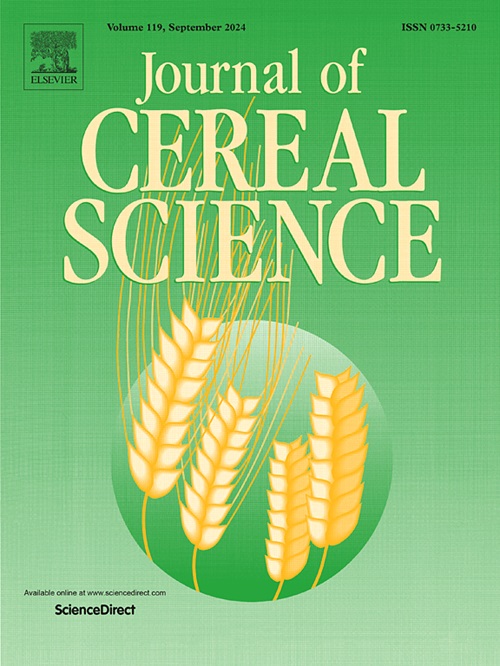小麦籽粒微量元素含量与产量的基因型-环境互作、标记-性状关联及SSR验证
IF 3.7
2区 农林科学
Q2 FOOD SCIENCE & TECHNOLOGY
引用次数: 0
摘要
本研究探讨了基因型(G)、环境(E)及其互作(G × E)对小麦籽粒铁含量(GFeC)、籽粒锌含量(GZnC)和亩产(GYPP)的影响。在8种不同的环境中对32种基因型进行了评估,揭示了所有性状的显着表型变异。GGE双图和AMMI分析发现,基因型14 (‘ EU 60 ‘)和15 (’ EU 61 ’)在微量营养素含量方面表现稳定,而基因型27 (' MP 1358 ')表现出较好的产量稳定性。共检测到113个显著标记-性状关联(mta),其中GFeC 42个,GZnC 23个,GYPP 48个。值得注意的是,标记性状关联(mta) Xgwm468.1和Xgwm538.1与GFeC和GZnC一致,而Xwmc382.4与GFeC和GYPP共同,提示多效性或紧密连锁。对标记物Xbarc74-5B进行GZnC验证,证实其在标记辅助选择中的可靠性。这些发现为未来培育高产、气候适应性强、营养丰富的小麦品种提供了宝贵的基因组资源和表型见解。本文章由计算机程序翻译,如有差异,请以英文原文为准。

Genotype × environment interaction, marker-trait association, and SSR validation for grain micronutrient content and yield in wheat (Triticum aestivum L.)
The present study explored the interaction between genotype (G), environment (E), and their interaction (G × E) in determining grain iron content (GFeC), grain zinc content (GZnC), and grain yield per plot (GYPP) in wheat. Thirty-two genotypes were evaluated across eight contrasting environments, revealing significant phenotypic variation for all traits. GGE biplot and AMMI analyses identified Genotypes 14 (‘EU 60’) and 15 (‘EU 61’) as stable performers for micronutrient content, while Genotype 27 (‘MP 1358’) exhibited superior yield stability. A total of 113 significant marker-trait associations (MTAs) were detected, including 42 for GFeC, 23 for GZnC, and 48 for GYPP. Notably, marker trait association (MTAs) Xgwm468.1 and Xgwm538.1 were consistently associated with both GFeC and GZnC, while Xwmc382.4 was common to GFeC and GYPP, suggesting pleiotropy or tight linkage. Marker Xbarc74-5B was validated for GZnC, confirming its reliability for marker-assisted selection. These findings provide valuable genomic resources and phenotypic insights for future breeding programs aimed at developing high-yielding, climate-resilient, and nutrient-rich wheat cultivars.
求助全文
通过发布文献求助,成功后即可免费获取论文全文。
去求助
来源期刊

Journal of Cereal Science
工程技术-食品科技
CiteScore
7.80
自引率
2.60%
发文量
163
审稿时长
38 days
期刊介绍:
The Journal of Cereal Science was established in 1983 to provide an International forum for the publication of original research papers of high standing covering all aspects of cereal science related to the functional and nutritional quality of cereal grains (true cereals - members of the Poaceae family and starchy pseudocereals - members of the Amaranthaceae, Chenopodiaceae and Polygonaceae families) and their products, in relation to the cereals used. The journal also publishes concise and critical review articles appraising the status and future directions of specific areas of cereal science and short communications that present news of important advances in research. The journal aims at topicality and at providing comprehensive coverage of progress in the field.
 求助内容:
求助内容: 应助结果提醒方式:
应助结果提醒方式:


